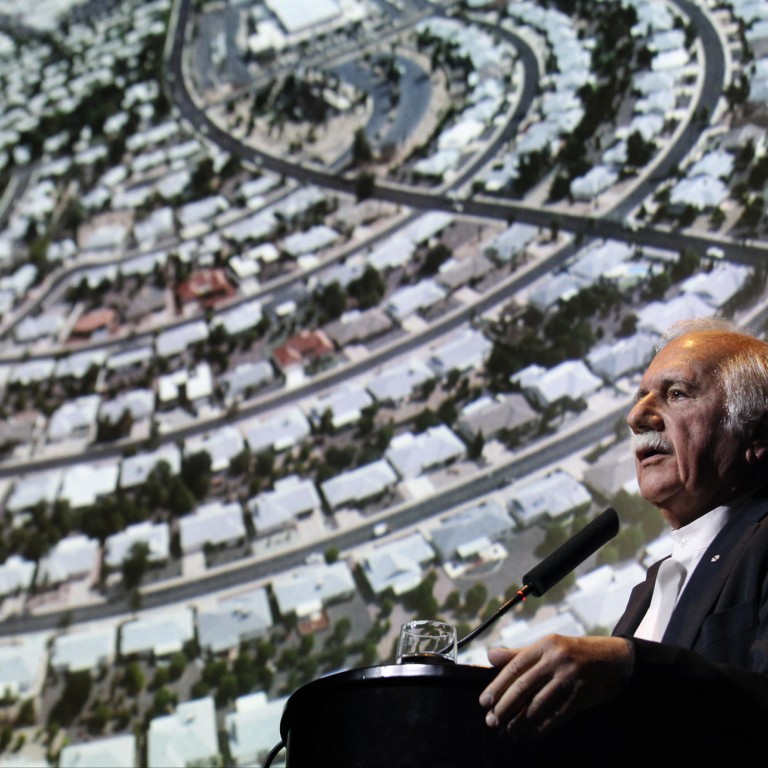
Israeli-Canadian architect Moshe Safdie laments unfriendly Hong Kong architecture
Moshe Safdie wants to reintroduce culture, climate and geography into city's architecture
When Israeli-Canadian architect Moshe Safdie first came to Hong Kong 30 to 40 years ago, he found open streets, markets and fewer skyscrapers.

"You don't feel the water," Safdie said, sitting in the lounge of the harbourfront Four Seasons Hotel in Central. "There's water everywhere, but how many of these buildings around you actually make use of the fact, other than the view?"
The 75-year-old architect was in town for a talk at the Asia Society on Thursday on what he calls "humanising the mega-scale" - or how architects and planners can bring back culture, climate, geography and a sense of belonging to big projects in dense urban areas.
"Nowadays, people pay more attention to the shape, the geometry, the spectacle on the skyline, and pay very little attention to the things I'm talking about," he said.
Safdie's visit comes at a time when these issues feature prominently in the public discourse, as Hong Kong struggles to balance modernity with liveability and cultural identity.
"Every city as dense as Hong Kong, as intense, will have stress. Our job is to reduce it," said Safdie, who is known for incorporating a humane design philosophy into big projects.
"Hong Kong has demonstrated a major commitment to infrastructure and improving infrastructure. But there is much left to be done about humanising the mega-scale."
In order to achieve this, he advocates designs that allow daylight to permeate a building - unlike the common approach to large offices, in which only those on the fringes see any natural light.
Safdie is known for his design of Habitat 67, an experimental housing development in Montreal, Canada, that has become a model for utopian urban living.
It was designed to incorporate some of the benefits of suburban living, such as gardens, fresh air, privacy and multi-storey homes, but with the density of a modern urban apartment building.
While approaches like Safdie's are becoming more common in academia, they remain a rarity in the industry, Professor Ng Mee-kam, an urban planning expert with Chinese University, said.
"The current [urban planning] system doesn't allow people to be sensitive to the environment," Ng said.
Safdie is also the architect behind Israel's Yad Vashem Holocaust History Museum in Israel and Singapore's Marina Bay Sands resort. In Hong Kong, his bids to develop the West Kowloon Cultural District and its Xiqu Centre were unsuccessful, but he is working with the Hong Kong-based Kerry Group to build a luxury residential project in Qinhuangdao in Hebei province.
The Kerry Group is controlling shareholder of the SCMP Group, publisher of the and .

